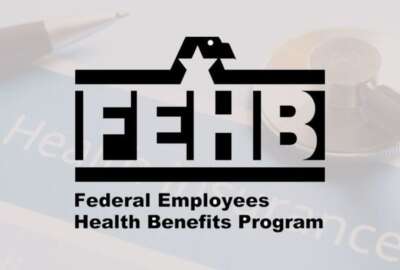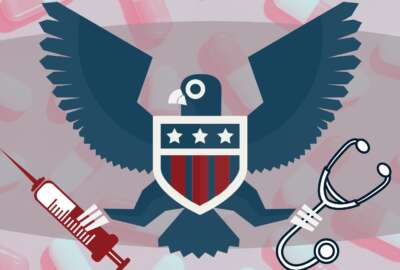Centralized FEHB database key to OPM cost savings, GAO says
With stricter measures on who can enroll — and stay enrolled — in FEHB, OPM should be able to more effectively address cost issues in the program, GAO said.
While years in the making, the Office of Personnel Management’s upcoming plans to try to cut down on unneeded health insurance costs will also arrive to open arms from the Government Accountability Office.
Beginning in 2025, OPM is adding stricter eligibility requirements to try to root out ineligible enrollees in the Federal Employees Health Benefits (FEHB) program — something that’s been high on GAO’s radar for at least the last few years. A 2022 GAO report showed that OPM spends up to $1 billion each year on ineligible participants erroneously enrolled in FEHB.
“One of the biggest benefit systems in the country, and for decades, nobody checked these things,” Comptroller General Gene Dodaro told lawmakers on the House Oversight and Accountability Committee during a June 13 hearing.
Each year, GAO releases a report of the programs and spending areas across the federal government that could lead to significant cost savings for agencies. The changes that GAO recommends aren’t always complex, but to be able to implement the measures, agencies need resources, Dodaro said.
“This isn’t rocket science — I mean, it’s basically looking at those things and doing some good auditing,” Dodaro said. “It could be tackled as soon as the resources could be marshaled to do it.”
Agencies often ‘slow to act’
By putting more controls in place and creating stricter measures on who can actually enroll — and stay enrolled — in FEHB, OPM should be able to more effectively address the cost issues, GAO said. Identifying ineligible dependents has remained a top challenge for FEHB since 2018, according to OPM’s inspector general office.
“[OPM] recognized the significance of the issue, but like in a lot of cases, people are slow to act on a recommendation,” Dodaro told committee lawmakers. “That’s why we keep following up.”
Addressing the FEHB spending challenges will involve a multi-pronged approach from OPM. It’s a matter of finding and removing currently enrolled ineligible FEHB members and preventing new members from enrolling in error, while also making long-term data updates to more easily root out ineligible enrollees in the future.
OPM is already gearing up to take some of these steps beginning in 2025. Starting next year, federal employees will be required to provide eligibility documentation for any family members they want to add to their insurance coverage during Open Season. But on top of that, Dodaro said an audit of current FEHB enrollees is necessary.
“[OPM] has not yet gone back and looked at all the people that are already in the system as to whether they have legitimate numbers of … people who are eligible for services,” Dodaro said. “They could sample across federal agencies, they could get some participation. But there has to be a thorough audit done of existing people that are on the federal employee’s health benefit systems.”
OPM is planning to start on this path as well. During this year’s Open Season, agencies will be required to validate the eligibility of a random sample of FEHB participants. That sample must comprise at least 10% of elections for both Self-Plus-One and Self-and-Family enrollments. Where possible, OPM is also encouraging agencies to validate larger portions of enrollees. If agencies find ineligible members through that data collection, they’ll have to follow OPM’s instructions for removing them.
A centralized FEHB database
But another major barrier for OPM to make improvements, Dodaro said, is the agency’s lack of a central database of FEHB enrollees. Without a centralized system, it’s much more difficult to identify and remove erroneously enrolled FEHB participants.
“Current FEHB eligibility determination and enrollment is highly decentralized and requires cooperation between nearly 100 employing offices responsible for determining eligibility and enrolling more than 8 million members,” OPM said in April. “If funded, OPM could extend this same central enrollment system to all FEHB enrollments, which would allow OPM to manage and make consistent all FEHB enrollments and remove individuals who cease to be eligible for the program.”
OPM, as part of its fiscal 2025 budget request, is proposing legislation to build a centralized enrollment system for FEHB. With a central database, OPM would be able to more quickly address the problem and avoid the spending errors. That system, if it’s implemented, would be modeled after the centralized system OPM just recently built for the upcoming Postal Service Health Benefits program.
During the oversight committee hearing, Dodaro said OPM Acting Director Rob Shriver’s background in insurance should help OPM make headway and get the changes underway — as would asking the Office of Management and Budget for additional support.
“He knows what the shortcomings are,” Dodaro, speaking about Shriver, told House committee members last week. “The question he’s wrestling with is how can he implement all these things that need to be implemented as soon as possible, like getting a central repository in place.”
Copyright © 2025 Federal News Network. All rights reserved. This website is not intended for users located within the European Economic Area.
Drew Friedman is a workforce, pay and benefits reporter for Federal News Network.
Follow @dfriedmanWFED





